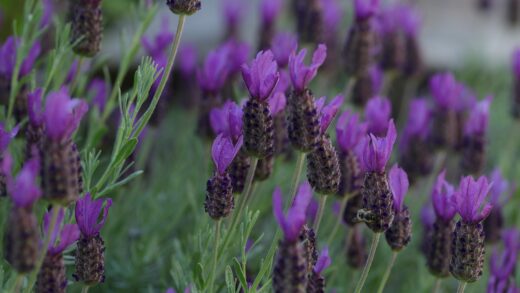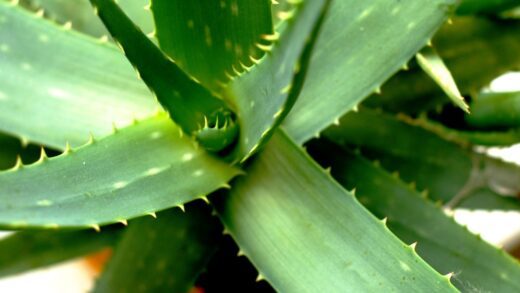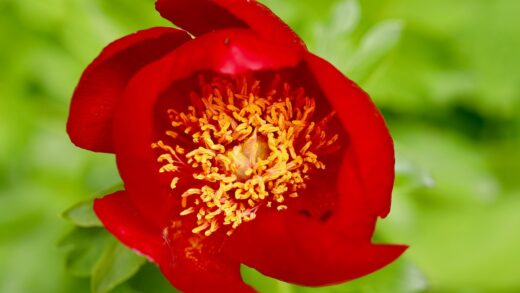Pruning is one of the most important horticultural practices for cultivating a truly spectacular brazilian jasmine. Far from being an optional chore, a thoughtful and well-timed approach to trimming is essential for controlling the plant’s size, encouraging a fuller, bushier habit, and, most critically, maximizing its flower production. An unpruned Mandevilla can quickly become a tangled, leggy mess with sparse foliage and flowers concentrated only at the very ends of its long vines. By making strategic cuts, the gardener can redirect the plant’s energy, stimulating the growth of new lateral shoots, which are the very stems that will bear the season’s magnificent trumpet-shaped blooms. Mastering the art of pruning transforms a simple vine into a well-shaped and floriferous specimen.
The fundamental reason pruning is so effective is that brazilian jasmine produces its flowers on new growth, that is, on the stems that grow during the current season. Therefore, the primary goal of any pruning strategy is to encourage the plant to produce as many new shoots as possible. Without pruning, the plant will put its energy into extending its existing long vines, resulting in limited new growth and, consequently, fewer flowers. By cutting back the old stems, you force the plant to branch out from buds located further down the vine, creating a multitude of new flowering stems and a much denser, more attractive plant.
The ideal time to perform the main structural pruning is in late winter or early spring, just before the plant begins its vigorous new growth phase. For plants that have been overwintered indoors, this is the perfect task to undertake just before you begin the process of moving them back outside. At this point, the plant is dormant, and the branch structure is clearly visible without a full canopy of leaves, making it easier to see where to make your cuts. Pruning at this time ensures that the plant’s stored energy reserves will be channeled directly into producing strong new shoots as soon as the weather warms up.
When making your pruning cuts, always use a pair of clean, sharp pruning shears or secateurs. A clean cut will heal more quickly and is less likely to become a site for disease infection than a ragged tear made by dull blades. The general rule is to cut back the main stems by at least one-third to one-half of their length. You should make your cut about a quarter of an inch above a node—the small swelling on the stem where a leaf or a side shoot emerges. New growth will sprout from the buds located at this node.
In addition to reducing the length of the main vines, you should also take this opportunity to remove any wood that is clearly dead, damaged, or weak and spindly. This type of clean-up pruning not only improves the plant’s overall appearance and health but also removes non-productive parts, allowing the plant to focus all its resources on developing a strong framework of healthy, vigorous stems. Do not be timid; Mandevilla is a vigorous grower and will respond well to a hard pruning, rewarding you with a lush, full plant laden with blooms in the coming months.
More articles on this topic
Pinching for bushier growth
Beyond the main annual pruning, a simple technique known as ‘pinching’ can be employed throughout the early part of the growing season to dramatically increase the density of the plant. Pinching is essentially a micro-pruning technique that involves removing the very tip of a new, growing stem. This can be done easily with your fingertips or a small pair of snips. The removal of the apical bud, which is at the very tip of the stem, signals the plant to activate the dormant lateral buds located at the nodes just below the pinch.
The result of this simple action is that instead of continuing to grow as a single, long vine, the stem will branch out, producing two or more new shoots from where there was previously only one. By repeating this process on the new shoots that develop, you can effectively multiply the number of growing tips on your plant. Since each of these tips has the potential to produce flowers, this technique is a powerful way to create a much fuller plant with significantly more blooms.
The best time to practice pinching is in the spring and early summer while the plant is in its rapid vegetative growth phase. You can start pinching the new shoots after they have developed a few sets of leaves. Continue to pinch back the tips of the vines periodically for the first couple of months of the growing season. This will build a dense framework of stems and foliage that will serve as the foundation for the floral display to come.
It is generally recommended to stop pinching around mid-summer. This allows the plant sufficient time to develop flower buds on the ends of the new stems you have encouraged. While pinching does temporarily delay the onset of the very first flowers, the payoff is a much more dramatic and sustained blooming period later in the season. It is a classic case of short-term patience leading to a far greater long-term reward in the form of a truly spectacular, flower-covered vine.
More articles on this topic
Training and shaping the vine
Pruning works hand-in-hand with the ongoing task of training the vine onto its support structure. As the new stems grow, they need to be guided to create the desired shape and ensure the plant covers its trellis, arbor, or fence in an attractive and orderly fashion. This is not just for aesthetic reasons; proper training also improves the health of the plant by ensuring good air circulation through the foliage and allowing sunlight to reach all parts of the vine, which encourages even growth and flowering.
As the new shoots emerge after the initial spring pruning, begin to gently weave them onto the support or loosely attach them with soft plant ties, garden twine, or clips. Be careful not to tie the stems too tightly, as they will thicken over time, and a tight tie could constrict and damage the stem, cutting off the flow of water and nutrients. The goal is to provide gentle guidance, encouraging the plant’s natural twining habit to take over.
Try to space the main stems evenly across the support structure to create a balanced framework. This prevents the plant from becoming a dense, tangled clump in one area while other parts of the trellis remain bare. As the season progresses, you will need to continue this process, tucking and tying in new growth as it appears. This regular interaction with your plant also provides a great opportunity to inspect it for any early signs of pests or diseases.
If a vine happens to grow in an undesirable direction or becomes too unruly, do not hesitate to prune it back. You can trim a wayward stem back to a leaf node at any point during the growing season. This will encourage it to branch out and grow in a different direction, allowing you to maintain the desired shape and size of your brazilian jasmine throughout the summer. This combination of pruning and training is what allows you to sculpt the plant into a living work of art.
Deadheading for continuous blooms
Deadheading is the practice of removing spent or faded flowers from the plant. This is another form of maintenance pruning that, while simple, can have a significant impact on the length and intensity of the blooming season. The primary biological purpose of a flower is to produce seeds to ensure the continuation of the species. Once a flower has been pollinated and begins to fade, the plant will start to invest a considerable amount of energy into developing a seed pod.
By removing the old flowers before they have a chance to set seed, you effectively short-circuit this process. This signals to the plant that its reproductive mission has not yet been accomplished, which in turn encourages it to redirect its energy back into producing more buds and flowers. Regular deadheading can therefore trick the plant into a prolonged state of blooming, extending the floral display significantly later into the season than if the plant were left to its own devices.
The process of deadheading is very simple. You can either pinch off the faded flower with your fingers or use a small pair of snips to cut the flower stalk back to the next set of leaves or a side shoot. While you are doing this, you can also remove any yellowing leaves or small, twiggy stems to keep the plant looking clean and tidy. Making deadheading a regular part of your garden routine, perhaps something you do every few days, will keep your Mandevilla looking its best and performing at its peak.
While deadheading is highly beneficial, it is not absolutely essential for the plant’s survival. If you are unable to deadhead regularly, your brazilian jasmine will still bloom, but the flowering period may be shorter and less prolific. However, for those gardeners who want to get the absolute most out of their plant and enjoy a continuous cascade of vibrant color all summer long, this simple and rewarding task is well worth the small amount of time and effort it requires.
Rejuvenation pruning for older plants
Over time, even a well-cared-for brazilian jasmine can become large, woody, and less productive, with much of its growth concentrated at the top of the plant and a bare, twiggy base. When this happens, a more drastic form of pruning, known as rejuvenation or renewal pruning, can be performed to reinvigorate the old plant and restore its youthful vigor. This process involves cutting the plant back very hard to stimulate the growth of new, fresh stems from the base.
Rejuvenation pruning should be done in the late winter or very early spring while the plant is still dormant. Using a sturdy pair of loppers or a pruning saw for thicker stems, you can cut the entire plant back severely, leaving only 6 to 12 inches of the main stems remaining above the soil line. This may seem shockingly drastic, and it will mean sacrificing flowers for part of the following season, but it is often the best way to salvage a declining, overgrown plant.
After such a hard pruning, the plant will need careful attention as it begins to recover. As the weather warms, the plant’s root system will push out a flush of new shoots from the dormant buds on the remaining stumps. When these new shoots appear, it is important to select the strongest and best-placed ones to form the new framework of the plant and prune off any weak or crowded shoots. This ensures the plant’s energy is not wasted and is directed into creating a strong new structure.
The new growth will be vigorous, and you will need to be diligent about training these new stems onto your support structure right from the beginning. You should also ensure the plant receives adequate water and fertilizer to support this rapid new growth. While this hard reset may result in a delayed or reduced flowering season in the first year, by the second year, you will have a completely renewed and revitalized plant with a much better shape and a far more prolific blooming capacity for years to come.


















